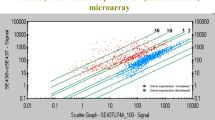Abstract.
The intracerebral formation of inflammatory infiltrates is a complex process, which may be regulated by chemokines. This study defines the kinetics and cellular sources of T cell- and macrophage-attracting chemokines in murine Toxoplasma encephalitis (TE) by ribonuclease protection assay, reverse transcription-PCR, in situ hybridization, and immunohistochemistry. Whereas astrocytes were the major source of interferon (IFN)-γ-inducible protein-10 (CRG-2/IP-10) and monocyte chemoattractant protein (MCP)-1, microglia expressed RANTES, monokine induced by IFN-γ (MuMIG) and occasionally CRG-2/IP-10 RNA. Despite being ubiquitously activated, only astrocytes and microglia confined to inflammatory infiltrates expressed chemokine genes. Intracerebral leukocytes transcribed RANTES, MuMIG, and occasionally CRG-2/IP-10 and MCP-1. IFN-γ-deficient mice failed to produce CRG-2/IP-10, MuMIG, RANTES and expressed macrophage inflammatory protein (MIP-1)α, MIP-1β, and MCP-1 mRNA at reduced levels, functionally resulting in a strongly reduced recruitment of leukocytes across the blood-brain barrier and prevented their further invasion of the brain parenchyma. Since T cells are the single source of IFN-γ in TE, these findings indicate that T cells pave the way of leukocytes to parenchymatous parasites via IFN-γ.
Similar content being viewed by others
Author information
Authors and Affiliations
Additional information
Revised, accepted: 30 October 2001
Electronic Publication
Rights and permissions
About this article
Cite this article
Strack, A., Asensio, V.C., Campbell, I.L. et al. Chemokines are differentially expressed by astrocytes, microglia and inflammatory leukocytes in Toxoplasma encephalitis and critically regulated by interferon-γ. Acta Neuropathol 103, 458–468 (2002). https://doi.org/10.1007/s00401-001-0491-7
Received:
Issue Date:
DOI: https://doi.org/10.1007/s00401-001-0491-7




